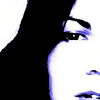Take a photo of a barcode or cover

verosnotebook 's review for:
Our Mutual Friend
by Charles Dickens
4.5
“This reminds me, Godmother, to ask you a serious question. You are as wise as wise can be (having been brought up by the fairies), and you can tell me this: Is it better to have had a good thing and lost it, or never to have had it?”
At first look, Our Mutual Friend seems to be a brick of a Victorian novel where the themes of family life, marriage, class and money will be treated in a strong fashion. This is correct and yet this description doesn’t even scratch the surface of this amazing book.
Dickens offers us in this last novel of his a veritable fairy tale with more mysteries and secrets than could be believed, and focuses particularly on social mobility, greed, avarice and obsessive passion, while adding elements of Beauty and Beast and Little Red Riding Hood. Naturally, the cast is wide and colourful, full of fascinating protagonists with undisputably dickensian names and attributes: the pretentious Veneerings, Silas Wegg and his wooden leg, the taxidermist Mr Venus, the kind Jew Mr Riah, etc. The female characters are especially noteworthy in this instance, not just two-dimensional or secondary but fully portrayed, Jenny Wren being the most memorable and likeable. Comparisons and contrasts abound, from the superficial world of the nouveau riche to the poor river-dwellers, with the Thames, the one constant, meandering through the setting and indeed the lives of all the protagonists.
Dickens is brilliant at painting the society he lived in, criticising it while entertaining his public. This story is at the same time dark and violent, comical and full of ridicule, suspenseful and thrilling, and even touching in its representation of love. This is a long book and yes it could have been shorter but it is still a great novel worth of the extra time.
“This reminds me, Godmother, to ask you a serious question. You are as wise as wise can be (having been brought up by the fairies), and you can tell me this: Is it better to have had a good thing and lost it, or never to have had it?”
At first look, Our Mutual Friend seems to be a brick of a Victorian novel where the themes of family life, marriage, class and money will be treated in a strong fashion. This is correct and yet this description doesn’t even scratch the surface of this amazing book.
Dickens offers us in this last novel of his a veritable fairy tale with more mysteries and secrets than could be believed, and focuses particularly on social mobility, greed, avarice and obsessive passion, while adding elements of Beauty and Beast and Little Red Riding Hood. Naturally, the cast is wide and colourful, full of fascinating protagonists with undisputably dickensian names and attributes: the pretentious Veneerings, Silas Wegg and his wooden leg, the taxidermist Mr Venus, the kind Jew Mr Riah, etc. The female characters are especially noteworthy in this instance, not just two-dimensional or secondary but fully portrayed, Jenny Wren being the most memorable and likeable. Comparisons and contrasts abound, from the superficial world of the nouveau riche to the poor river-dwellers, with the Thames, the one constant, meandering through the setting and indeed the lives of all the protagonists.
Dickens is brilliant at painting the society he lived in, criticising it while entertaining his public. This story is at the same time dark and violent, comical and full of ridicule, suspenseful and thrilling, and even touching in its representation of love. This is a long book and yes it could have been shorter but it is still a great novel worth of the extra time.